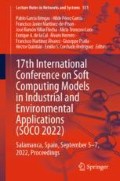Abstract
In this work we will address the short-term electricity consumption forecasting problem related to the electric vehicle load demand. In particular we will focus on the explainability of the model obtained. These are important aspects of this problem, since it would help gaining insight on the most important features involved in the forecasts. For the purpose of forecasting, we will use linear regression and three machine learning methods: random forest, gradient boosting and long short-term memory artificial neural network. Later, We add an explainability layer to the models generated, to get a better understanding of the predictions. As far the predictions are concerned, results obtained by the long short-term memory neural network are more accurate than those obtained by random forest and gradient boost, having used linear regression as baseline. The features that most contribute to the predictions are the 25 closest to the present but also a set of features with 30 to 60 unit lag.
Access this chapter
Tax calculation will be finalised at checkout
Purchases are for personal use only
References
Abdollahi, A., Pradhan, B.: Urban vegetation mapping from aerial imagery using explainable AI (XAI). Sensors 21(14), 4738 (2021)
Arras, L., Osman, A., Samek, W.: CLEVR-XAI: a benchmark dataset for the ground truth evaluation of neural network explanations. Inf. Fus. 81, 14–40 (2022)
Arrieta, A.B., Díaz-Rodríguez, N., del Ser, J., et al.: Explainable Artificial Intelligence (XAI): concepts, taxonomies, opportunities and challenges toward responsible AI. Inf. Fus. 58, 82–115 (2020)
Chollet, F., et al.: Keras (2015). https://github.com/fchollet/keras
Gómez-Quiles, C., Asencio-Cortés, G., Gastalver-Rubio, A., et al.: A novel ensemble method for electric vehicle power consumption forecasting: application to the Spanish system. IEEE Access 7, 120840–120856 (2019)
Martin, S.S., Pradhan, B.: Earthquake-induced building-damage mapping using explainable AI (XAI). Sensors 21(13), 4489 (2021)
Muddamsetty, S.M., Jahromi, M.N.S., Ciontos, A.E., Fenoy, L.M., Moeslund, T.B.: Introducing and assessing the explainable AI (XAI) method: SIDU. CoRR, abs/2101.10710:1–35 (2021)
Pedregosa, F., et al.: Scikit-learn: machine learning in Python. J. Mach. Learn. Res. 12, 2825–2830 (2011)
Ribeiro, M.T., Singh, S., Guestrin, C.: Why should I trust you?: Explaining the predictions of any classifier. In: Proceedings of the ACM SIGKDD International Conference on Knowledge Discovery and Data Mining, pp. 1135–1144 (2016)
Sahakyan, M., Aung, Z., Rahwan, T.: Explainable artificial intelligence for tabular data: a survey. IEEE Access 9, 135392–135422 (2021)
Schelgel, U., Arnout, H., El-Assady, M., Oelke, D., Keim, D.A.: Towards a rigorous evaluation of XAI methods on time series. In: Proceedings of the IEEE/CVF International Conference on Computer Vision Workshop, pp. 4197–4201 (2019)
Scitovski, R., Sabo, K., Martínez-Álvarez, F., Ungar, S.: Cluster Analysis and Applications. Springer (2021)
The EA Team. My Electric Avenue. https://eatechnology.com/resources/projects/my-electric-avenue/. Accessed 17 Nov 2021
Tjoa, E., Guan, C.: A survey on explainable artificial intelligence (XAI): towards Medical XAI. CoRR, abs/1907.07374(8):1–22 (2015)
Torres, J.F., Hadjout, D., Sebaa, A., Martínez-Álvarez, F., Troncoso, A.: Deep learning for time series forecasting: a survey. Big Data 9(1), 3–21 (2021)
Tosun, A.B., Pullara, F., Becich, M.J.M.D., Taylor, D.L., Fine, J.L., Chennubhotla, S.C.: Explainable AI (XAI) for anatomic pathology. Adv. Anat. Pathol. 27(4), 241–250 (2020)
Acknowledgements
We would like to thank the Spanish Ministry of Economy and Competitiveness for the support under projects TIN2017-88209-C2-1-R and PID2020-11795RB-C21.
Author information
Authors and Affiliations
Corresponding author
Editor information
Editors and Affiliations
Rights and permissions
Copyright information
© 2023 The Author(s), under exclusive license to Springer Nature Switzerland AG
About this paper
Cite this paper
Gallardo-Gómez, J.A., Divina, F., Troncoso, A., Martínez-Álvarez, F. (2023). Explainable Artificial Intelligence for the Electric Vehicle Load Demand Forecasting Problem. In: García Bringas, P., et al. 17th International Conference on Soft Computing Models in Industrial and Environmental Applications (SOCO 2022). SOCO 2022. Lecture Notes in Networks and Systems, vol 531. Springer, Cham. https://doi.org/10.1007/978-3-031-18050-7_40
Download citation
DOI: https://doi.org/10.1007/978-3-031-18050-7_40
Published:
Publisher Name: Springer, Cham
Print ISBN: 978-3-031-18049-1
Online ISBN: 978-3-031-18050-7
eBook Packages: Intelligent Technologies and RoboticsIntelligent Technologies and Robotics (R0)

